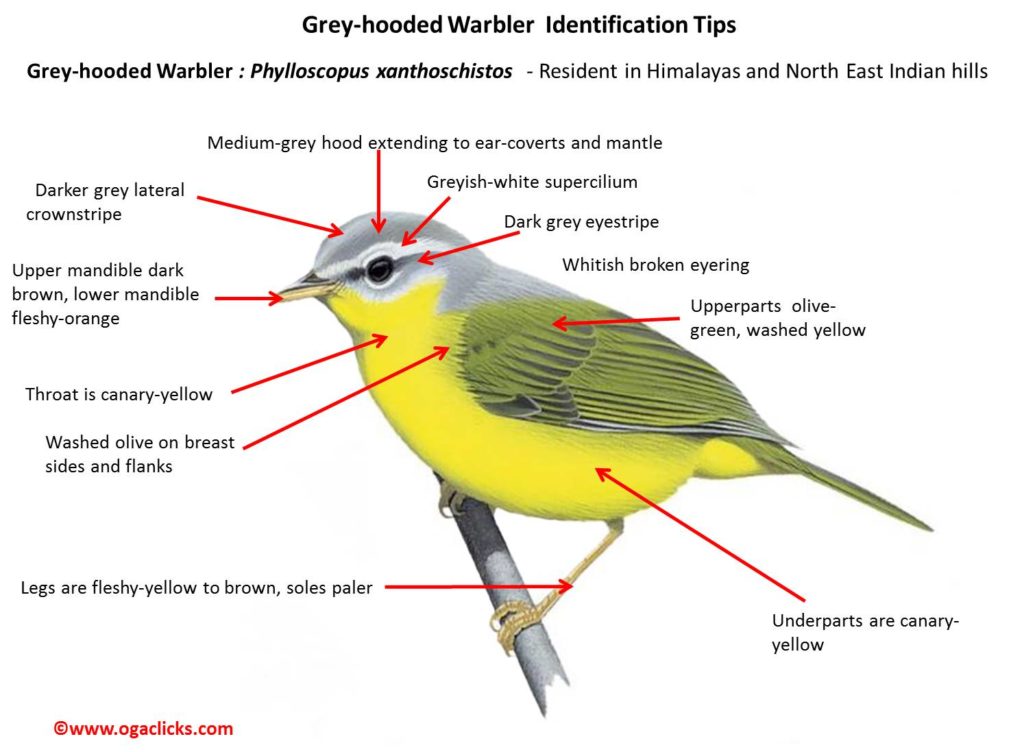Grey-hooded Warbler

Grey-hooded Warbler Phylloscopus xanthoschistos
Etymology:
- Phylloscopus : Greek word phullon – leaf; skopos–seeker
- Xanthoschistos : Greek word xanthos – yellow; Latin word schistus –slate
Vernacular Names: Pun: Tiktikipiddi, Naga: Inshuushia
Distribution in India: Resident in Himalayas and North East Indian hills.
Description: Size of 9-10cm.It is asmall, conspicuous arboreal warbler with bright yellow underparts, lacking obvious eyering or wingbars shown by similar species. Nominate race has medium-grey hood extending to ear-coverts and mantle, diffusely darker grey lateral crownstripe and eyestripe, and greyish-white supercilium; upperparts, including wings, olive-green, washed yellow, brightest on rump and uppertail-coverts; flight-feathers brown, fringed yellow-green; tail feathers brown, extensively fringed yellowish-olive, white inner webs of outermost pair; throat and entire underparts canary-yellow, washed olive on breast sides and flanks; underwing-coverts pale yellow; iris dark brown, narrow whitish broken eyering; upper mandible dark brown, lower mandible fleshy-orange; legs fleshy-yellow to brown, soles paler.Both the sexes look similar.
Habitat: It is found in montane forests; inhabits both broadleaf forest and mixed broadleaf and coniferous forest, especially open forest with shrubbery and glades. It breeds between 900 m and 2750 m. In non-breeding season, found in foothills, some individuals even penetrating into upper limits of plains, gardens and waterside trees.
Food Habits: It eats tiny spiders and insects like small caterpillars and also small berries. It forages chiefly in mid-canopy, to lesser extent also in both lower and upper canopy. It also forages in low bushes, descending to ground level for nesting or to drink water. It feeds restlessly within outer foliage, frequently flicking wings and flashing tail; gleans items from foliage. The small flies are taken on the wing during short flycatcher-like sallies. Outside breeding season, small numbers may be scattered among mixed-species flocks.
Breeding Habits: They breed in May-Julyin Finland and Siberia.The nest is built by both sexes, mainly by female, a globular, domed construction of green moss and grass stems, lined with fur, hair and down, well concealed on ground, hidden below bushes and often among tree roots, or in hollow on sloping bank. They lay a clutch of 3-5 eggs. The incubation is done by both sexes, either equally or with female doing more of the work for a period of 10–11 days. Nests parasitized by Himalayan Cuckoo.